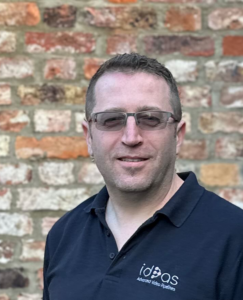
After more than 40 years of operation, DTVE is closing its doors and our website will no longer be updated daily. Thank you for all of your support.
Power off, sleep and standby – what do they mean?
 For those of you just joining us, this is episode three of a series of articles looking at sustainability in our industry.
For those of you just joining us, this is episode three of a series of articles looking at sustainability in our industry.
Episode 1 introduced Greening of Streaming and gave some scene-setting context touching on the high-level issues and the ‘neither tree hugger nor climate change denier’ positioning of the organisation.
Episode 2 Talked about the challenges we face at an engineering level, not least the challenge of measurement, attribution and consequence. This led to my organisation (www.greeningofstreaming.org) taking a view that energy consumption driven by software architecture should be the sharp point of focus for our sustainability effort in the streaming sector.
The organisation is member driven, with members from across the broadcast, telco and streaming industry. It has a number of working groups. Some are more active than others, but they all take on a zone of responsibility that our members feel needs deeper investigation.
Over the next few articles I will take you through the work of each of those working groups, so that you can get a better understanding of them, and perhaps will pique your interest in joining us as a member, with your organisation’s support. Through joining you can collaborate with us in changing the sustainability of our sector.
The nine working groups are Lexicon, Outreach, Best Practice, Live Event Energy Measurement (and hence stream distribution energy modelling), Audio, Encoding/Compression, Energy as a KPI, Consumer Premises Equipment and Academic Engagement.
Lexicon
 For this article we are going to focus on the first – Lexicon.
For this article we are going to focus on the first – Lexicon.
Terminology and measures often seem to be based on a common understanding, but as the language of sustainability comes into our industry from different directions, some seemingly–common terms are open to different interpretations and meanings, depending on who you talk with.
Early in our discussions we realised that we were going to focus on Energy. But energy is a relatively new concept when it comes to thinking about streaming systems architecture. We all studied it at school and have a broad idea of measures such as kilowatt hours, and watts. But as we looked at this in the working group we realised that different actors in the supply chain focus on these energy measurements in different ways.
I will quote part of the Working Group’s initial publication on the term WATTS which can be found on our publications page:
“It is complex to measure streaming services that span multiple systems. In many cases these are ‘nested’ systems such as a process on a CPU on a server with PSUs, in racks with PDUs which in turn are monitored at a ‘room’ or ‘availability zone’. The wrong measurement will count the same WATT multiple times, or miss evaluating the demand for energy-hungry ‘parent systems’. It is therefore critical that a complete systemic view be taken before any claims about the power requirement are made by individual contributors to the ecosystem, and particularly before any claims of reduction in power are made. Not least, it may be that the measurement is focussed on the wrong power load and a reduction in one area may cause unintended increases, and even significant increases in power consumption elsewhere in the complete system view. Without establishing a consistent way of measuring, we can’t hope to ‘actually’ reduce energy consumption.”
Hopefully you can see how this effort around language specificity helps us all collaborate more effectively at a deeper engineering level.
Power off, sleep and standby
Our second publication (now being premiered outside Greening of Streaming in this article so feedback and input is very welcome!) is titled “Power Off, Sleep and Standby”.
If we were surprised at how much discussion was caused by the term ‘Watts’ the debate around these terms was far more involved!
Initial discussion in the group revealed some interesting discrepancies. All were deemed to be primary targets for reducing energy consumption, and so applicable to sustainability conversations on the engineering floor.
However, as we explored how we use the terms there was some notable divergence in detail.
For those in our group who think about set-top boxes and consumer premises equipment, ‘sleep’ may have meant anything from ‘screen is off’ to ‘all systems suspended pending input’ to ‘the red light on the front of the device is dimmed.’
By contrast, our silicon-focused members think of ‘sleep’ as something that happens millions of times a second between processing cycles.
Not only was that a notable difference, but, being a global group, we have many different languages spoken. When asked about the accurate translations of the terms into our various members’ mother tongues, we found that in some cases the same word was used for ‘Sleep’ and ‘Standby’, or that standby equated to several terms in translation.
The result is that working on sustainability engineering across language borders might result in engineering teams working at cross purposes without a clear point of reference.
We decided to widen the scope and conduct an open survey, using a simple Google form and some LinkedIn promotion to the community. We had a wide range of responses, and some of these are captured in the paper.
There was clearly some element of scope. As we researched other organisations’ use of terms, we found some references in some standards organisations that correlated to our research and the end of the paper shows how we came to feel the terms we use in the streaming industry relate to various, more technically specific, terms in various layers of the underlying supply chain technology stack.
Three into seven
The most notable takeaway is that our three terms seem to span a spectrum of engineering ‘states’ that can, across a variety of stacks, be roughly correlated to seven more detailed definitions.
If one was to be specifying energy use within a streaming systems RFP, these seven references would serve as a basis for well-defined engineering requirements.
We discussed ‘consequential’ and ‘attributional’ life-cycle analysis models in the previous article. Working Group 1 is going deep on these topics for its next project. We feel these are critical terms to understand before we can really engineer any solutions that reduce energy consumption. This work is starting over the next few weeks so now is a great time to get involved in that discussion.
Do reach out if you want to know more – there is an endless discussion to be had here. We are always interested in new members – particularly publishers, vendors, and operators (including telco/mobile/carrier and CDN).
Streaming may drive demand for as much as 3% of global electricity supply (reach out to me and I’ll explain how we derive this one statistic that we use now). Our aim is to make that under 2% by better engineering, education, and collaboration.
Get involved – email [email protected] – and watch out for coming editions of this column if you want to learn more!


